Ibiza is not just a summer destination...
Friday, September 29, 2023
Ibiza is an island of many wonders and often only considered when planning a summer holiday. But Ibiza has so much to offer "off-season" especially if you are into gastro tourism, hotels are cheap and the food is outstanding. The gastronomy of Ibiza is a true reflection of the island: sea and mountain landscapes where different cultures and civilisations have left their mark. As a result of this combination you can sample delicious dishes made from traditional recipes. They feature fish, particularly grouper, and meat, predominantly pork, from which products as exquisite as the famous Balearic sobrasada are made.
The island's recipes are based on using its resources and the legacy of the different people who have 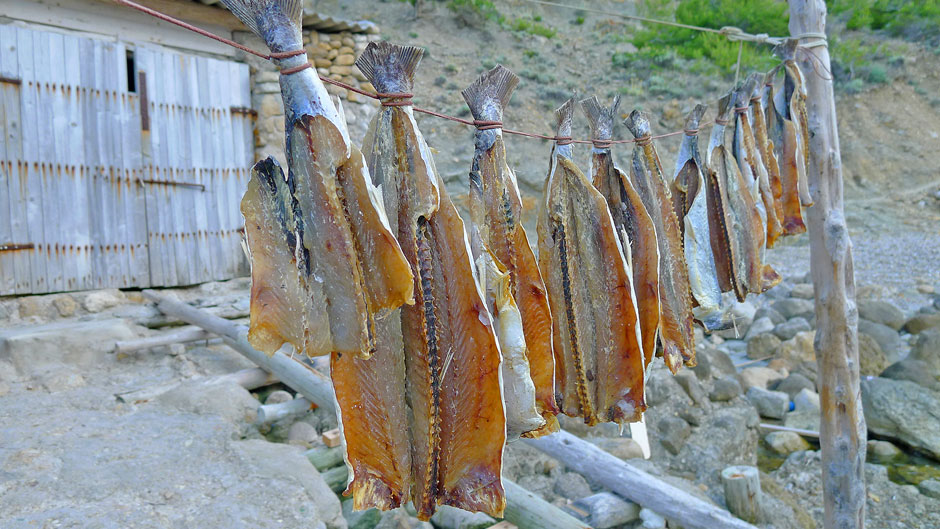 inhabited the island throughout history. The sea, of course, is the main larder for the ingredients used in Ibiza's cuisine. One of the specialities here is the guisat de peix (a fish and seafood stew with potatoes and garlic mayonnaise) and peix sec (sun-dried fish by the sea breeze and seasoned with spices by the fishermen themselves). Grouper is the star ingredient, accompanied by swordfish, lobster, prawns, ray and sole, and cooked in a greixonera (clay pot typical of the Balearic Islands). inhabited the island throughout history. The sea, of course, is the main larder for the ingredients used in Ibiza's cuisine. One of the specialities here is the guisat de peix (a fish and seafood stew with potatoes and garlic mayonnaise) and peix sec (sun-dried fish by the sea breeze and seasoned with spices by the fishermen themselves). Grouper is the star ingredient, accompanied by swordfish, lobster, prawns, ray and sole, and cooked in a greixonera (clay pot typical of the Balearic Islands).
 11.30.07.png) Also popular in Ibiza is tonyina a l'eivissenca (tuna seasoned with pine nuts, eggs, spices, lemon juice and dry white wine); and estufat de tonyina (tuna stew). Borrida, from the village of Rajada, is a local version of a recipe deeply rooted in the Mediterranean culture, made with marinated ray that is roasted in the oven, accompanied with potatoes and covered with an egg, parsley, garlic, fried bread, toasted almonds, saffron and olive oil sauce. Seafood is also abundant and clams are always a good recommendation. Also popular in Ibiza is tonyina a l'eivissenca (tuna seasoned with pine nuts, eggs, spices, lemon juice and dry white wine); and estufat de tonyina (tuna stew). Borrida, from the village of Rajada, is a local version of a recipe deeply rooted in the Mediterranean culture, made with marinated ray that is roasted in the oven, accompanied with potatoes and covered with an egg, parsley, garlic, fried bread, toasted almonds, saffron and olive oil sauce. Seafood is also abundant and clams are always a good recommendation.
While the distances are not very great, the gastronomy in the interior of the island differs from that of the coast. If you travel to this area, we recommend trying the hearty dishes with chicken, pork and lamb. The most popular recipes include sofrit pagés (lamb and chicken stew paired with a typical Balearic sobrasada).
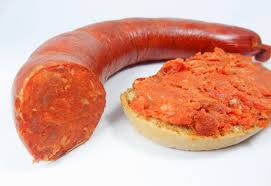 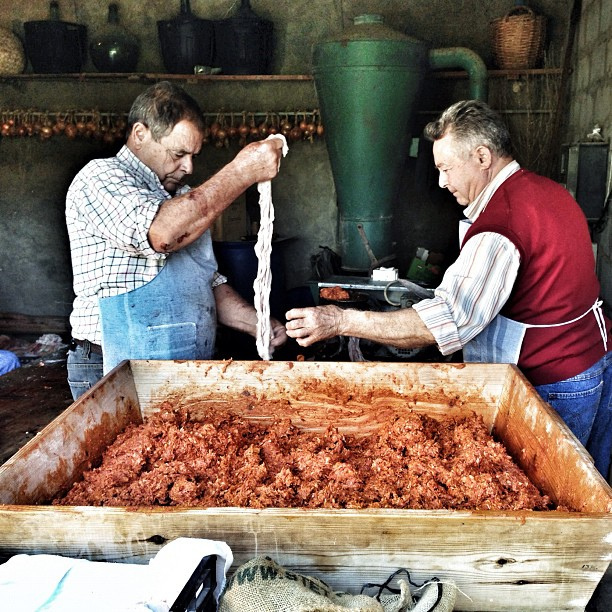
And although it will be difficult with any of the dishes mentioned so far, you must leave space for dessert. In addition to the famous ensaimadas, normally associated with Mallorca, which are at the top of the list of local confectionary, tradition also offers unique, delicious creations associated with certain dates and festivals, to such an extent there is almost one dessert for each occasion. addition to the famous ensaimadas, normally associated with Mallorca, which are at the top of the list of local confectionary, tradition also offers unique, delicious creations associated with certain dates and festivals, to such an extent there is almost one dessert for each occasion.
At the time of the All Saints celebrations you can try panellets, small, differently-shaped marzipan cakes with nuts, sugar, honey and spices.
At Easter, the patisseries offer rich rubiols (sweet, half moon-shaped cakes filled with anything from jam, cream and angel hair paste, to chocolate or cottage cheese). Another Holy Week dessert is the traditional flaó, a round sweet made with eggs and fresh cheese, similar to crème caramel. We're lucky that today you can try them at any time of year, just like the orelletes (with aniseed liqueur) or greixonera, a pudding made with leftover ensaimadas. So if you fancy doing some gastro tourism and enjoying some great weather and seaside views, Ibiza has it all...off-season!
 1
Like
Published at 10:06 PM Comments (0)
1
Like
Published at 10:06 PM Comments (0)
Do you know which foods are in season?
Friday, September 15, 2023
Eating seasonal products is good for your health, your pocket and the environment. In addition to helping to reduce CO2 emissions and supporting the sustainability of the earth, you consume products that have been picked at their optimum point of maturity at a fair price and that favours the local economy.
Decades ago, the inhabitants of urban centres disconnected from the agricultural world and the natural rhythm of the land. Be it summer or winter, north or south, in Europe, it is always possible to find exotic fruit on the supermarket shelves. There are two ways to achieve this: importing or growing in heated greenhouses. Both methods have an impact on the planet, generate waste and greenhouse gases that increasingly destroy the environment. Many are fighting to get rid of this luxury to which we have become accustomed and wanting to go back to consuming products as our ancestors did: following the rhythm of nature.
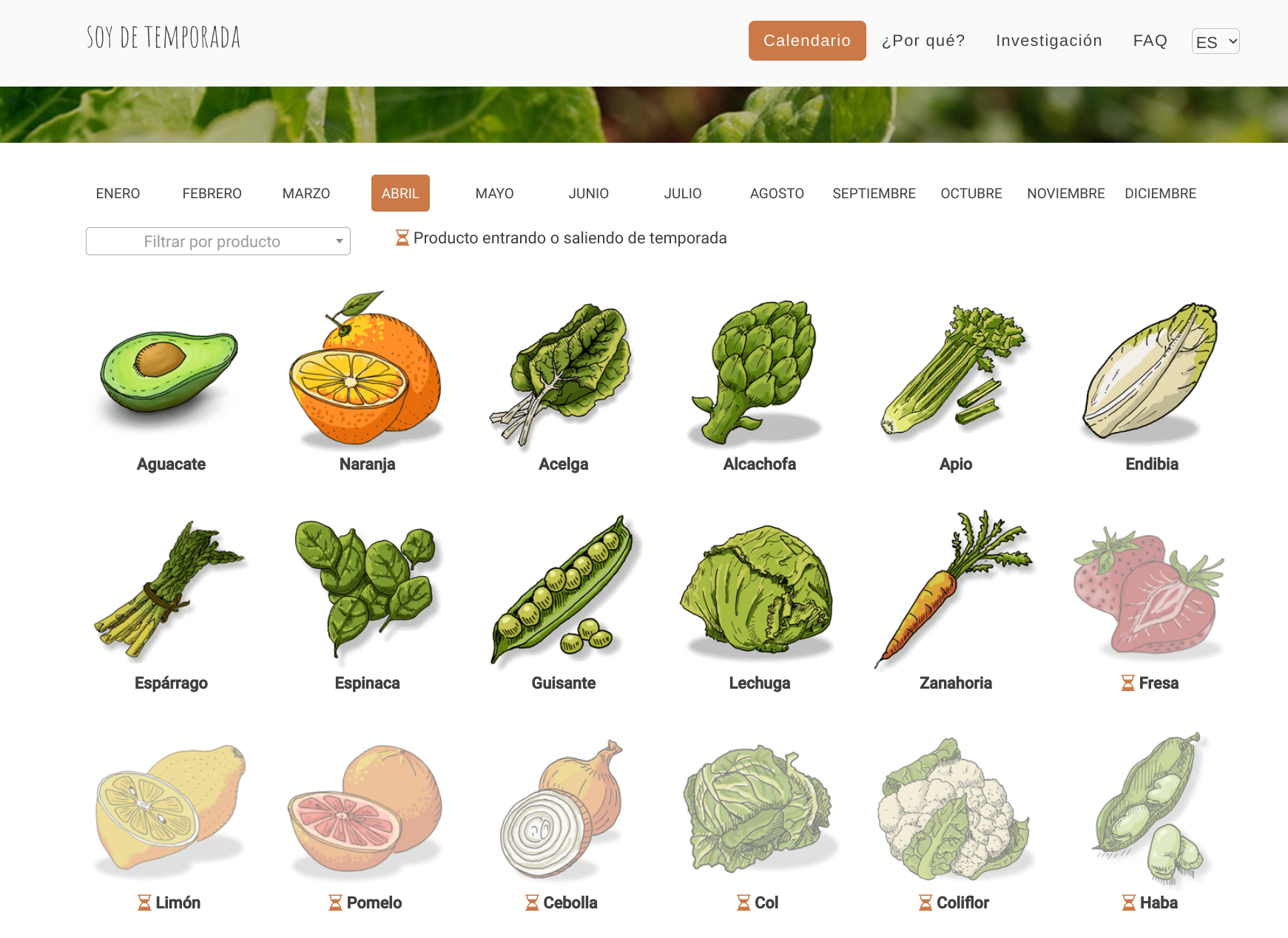
Now, how do you know what to eat and when? Searching for calendars on the web, one is faced with a lot of conflicting data and information. The objective of this project is to create a reliable, complete and accurate calendar as possible. The project "Soy de Temporada" (I am in season) was an initiative which was born from a cultural project called MediaLab Prado organised by the Madrid council. The original objective was to develop several calendars depending on the growing area, but due to lack of data, it was decided to create a single calendar for the entire peninsula.
With this project, they wanted to provide a tool to support responsible consumption, limiting the excessive transport of food and cultivation in heated greenhouses.
To prepare the calendar, the team contacted organizations and people from the agricultural world to inform them about the seasons of the products in their area. They spoke with farmers, consumer groups, food observatories and organic production councils.
Farmers and organizations from various autonomous communities have participated in the survey: Andalusia, Asturias, Extremadura, Madrid, Murcia, Navarra and the Basque Country. The form is accessible here and the collaboration of anyone with knowledge of the natural cycle of plants is appreciated. All the results were averaged to create a single calendar that gathers information from all areas of the Spanish peninsula. You will be able to see the results at www.soydetemporada.es where you will find an easy to use the calendar for seasonal fruit and veg.
Pay it a visit a discover what is in season this month and next!
 2
Like
Published at 10:49 PM Comments (0)
2
Like
Published at 10:49 PM Comments (0)
How to Make Papas Aliñas: A Refreshing Summer Delight from Spain
Friday, September 8, 2023
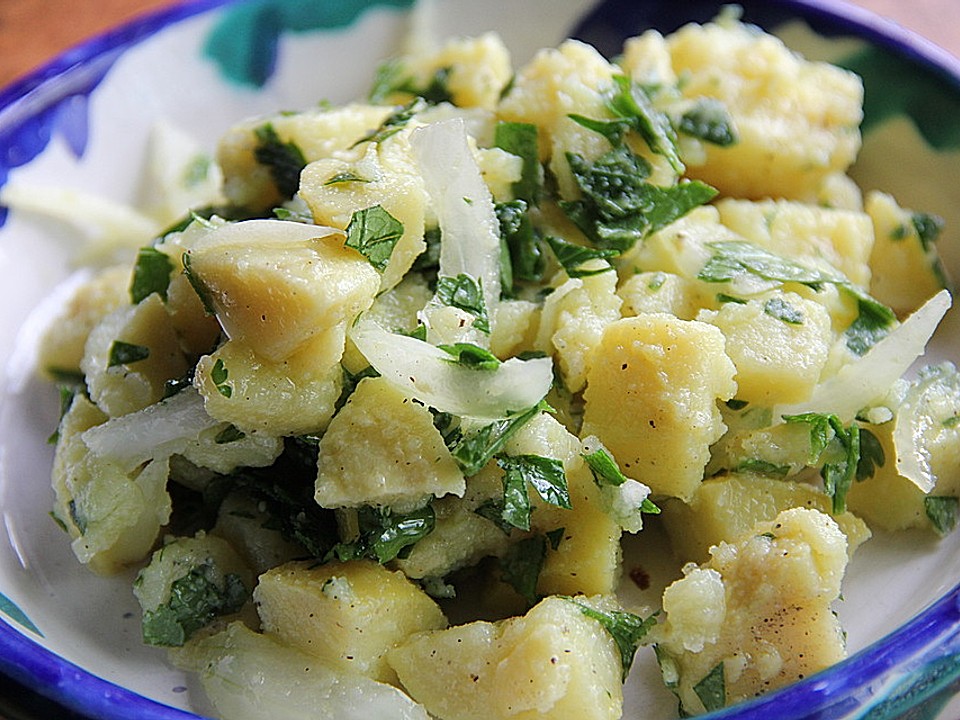
Papas Aliñas, which is effectively 'Spanish Potato Salad', is a delightful dish originating from the southern region of Spain, Andalusia. Considered a classic Spanish tapas, this easy-to-prepare ensemble boasts Mediterranean flavours that are hard to resist. Notably, Papas Aliñas is a typical summertime dish in Spain, loved for its light, refreshing taste that complements the warm weather, especially during al fresco dining and tapas nights on the terrace.
This delicious traditional vegetarian Spanish starter has various versions to suit different tastes and is a hallmark of Andalusian cuisine. Besides the classic version, which we will be preparing in this recipe, you can also find variations with additional ingredients like tuna, egg, olives, shrimp, or raw bell pepper. Let's see how to make it:
Ingredients
-
1 kg of potatoes
-
1 medium onion, finely chopped
-
1 green bell pepper, finely chopped
-
4 ripe tomatoes, finely chopped
-
1 bunch of parsley, finely chopped
-
2 cloves of garlic, finely chopped
-
Salt to taste
-
Pepper to taste
-
100ml of extra virgin olive oil
-
50ml of white wine vinegar
Steps to Follow
-
Prepare the potatoes: Wash and peel the potatoes. Place them in a large pot of cold, salted water and bring it to a boil. Cook them until they are tender but not falling apart (approximately 20 - 25 minutes after the water starts boiling). Once cooked, drain and let them cool.
-
Prepare the salad: As the potatoes cool, use this interval to finely chop the onion, green bell pepper, tomatoes, parsley, and garlic.
-
Mix the ingredients: Cut the cooled potatoes into bite-sized pieces and place them in a large bowl. Add the chopped onion, green bell pepper, tomatoes, parsley, and garlic to the bowl. Mix carefully to prevent the potatoes from breaking.
-
Prepare the dressing: In a separate bowl, combine the extra virgin olive oil, white wine vinegar, salt, and pepper to make the dressing. For the perfect vinaigrette, follow the 2:1 ratio of oil to vinegar, but feel free to adjust this to your liking.
-
Mix and let sit: Drizzle the dressing over the salad and mix gently, ensuring the potatoes remain intact. Once mixed thoroughly, allow the potatoes to rest and cool at room temperature for a couple of hours. This resting period allows the flavours to blend seamlessly, enhancing the overall taste of the dish.
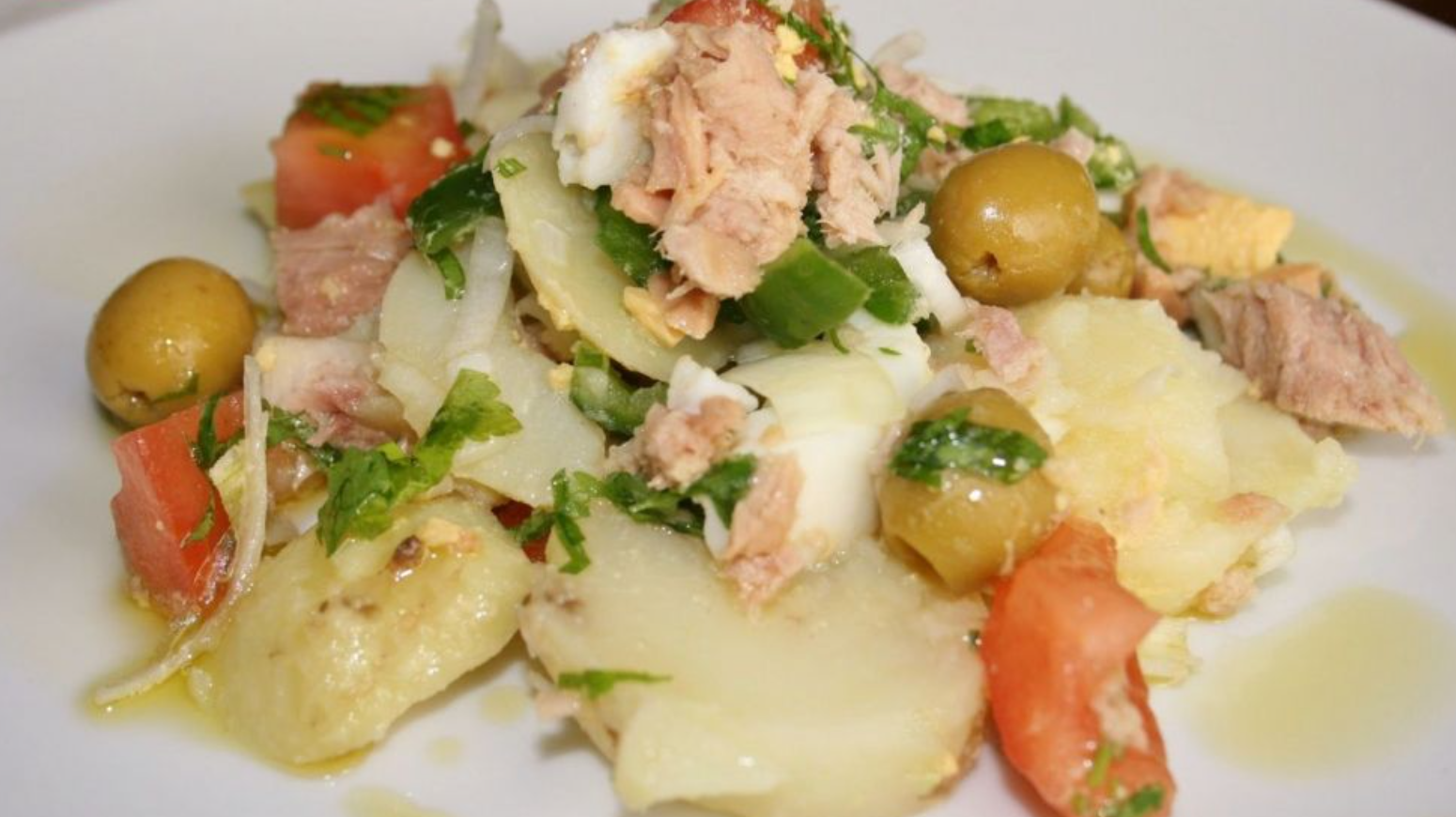
Tips for Perfecting Your Papas Aliñas
Choose the right potatoes: Opting for the right kind of potatoes is essential. Fresh, new potatoes are the best option, but if those aren't available, any good-quality boiling potatoes will suffice.
Cooling is crucial: Make sure to thoroughly cool the potatoes before adding the other ingredients. Warm potatoes are likely to disintegrate when mixed, which can change the desired texture of your salad.
Use tender onions and quality oil: For a pleasant, well-rounded flavour, use tender onions, which have a milder taste, and a delicate extra virgin olive oil that doesn't overpower the other ingredients - an arbequina variety is ideal.
Add the dressing while the potatoes are warm: A secret to creating the perfect Papas Aliñas is adding the vinaigrette while the potatoes are still warm. This method softens the onion and helps the potatoes absorb the dressing more effectively, resulting in a harmoniously blended flavour.
Experiment with flavours: While this recipe adheres to the traditional Papas Aliñas recipe, don't hesitate to add your own twist to it! Consider adding a dash of sherry vinegar, and boiled eggs, or including some canned tuna for a protein-rich variation.
This delightful Spanish Potato Salad, Papas Aliñas, is more than a mere dish; it's a celebration of summer in every bite.
 0
Like
Published at 7:28 PM Comments (0)
0
Like
Published at 7:28 PM Comments (0)
Spam post or Abuse? Please let us know
|
|